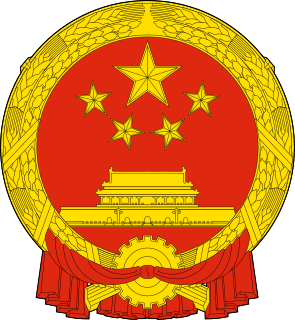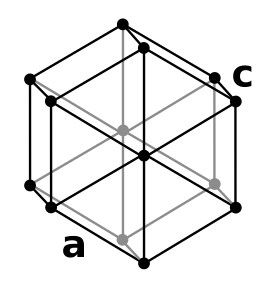
A hydrogen vehicle is a vehicle that uses hydrogen as its onboard fuel for motive power. Hydrogen vehicles include hydrogen-fueled space rockets, as well as automobiles and other transportation vehicles. The power plants of such vehicles convert the chemical energy of hydrogen to mechanical energy either by burning hydrogen in an internal combustion engine, or, more commonly, by reacting hydrogen with oxygen in a fuel cell to run electric motors. Widespread use of hydrogen for fueling transportation is a key element of a proposed hydrogen economy.
The hydrogen economy is the use of hydrogen as a fuel, particularly for electricity production and hydrogen vehicles; and using hydrogen for long term energy storage and for long distance transport of low-carbon energy.

A fuel cell vehicle (FCV) or fuel cell electric vehicle (FCEV) is a type of electric vehicle which uses a fuel cell, instead of a battery, or in combination with a battery or supercapacitor, to power its on-board electric motor. Fuel cells in vehicles generate electricity to power the motor, generally using oxygen from the air and compressed hydrogen. Most fuel cell vehicles are classified as zero-emissions vehicles that emit only water and heat. As compared with internal combustion vehicles, hydrogen vehicles centralize pollutants at the site of the hydrogen production, where hydrogen is typically derived from reformed natural gas. Transporting and storing hydrogen may also create pollutants.

A technology roadmap is a flexible planning technique to support strategic and long-range planning, by matching short-term and long-term goals with specific technology solutions. It is a plan that applies to a new product or process and may include using technology forecasting/technology scouting to identify suitable emerging technologies. It is a known technique to help manage the fuzzy front-end of innovation. It is also expected that roadmapping techniques may help companies to survive in turbulent environments and help them to plan in a more holistic way to include non-financial goals and drive towards a more sustainable development. Here roadmaps can be combined with other corporate foresight methods to facilitate systemic change.

Qian Sanqiang, also known as Tsien San-Tsiang, was a Chinese nuclear physicist. Due to his central role in the development of China's nuclear industry and nuclear weapons program, he is referred to as China's "father of the atomic bomb."
The following outline is provided as an overview of and topical guide to technology:

Wan Gang is a Chinese expert on automobiles, former president of Tongji University (2002–2007) and the Minister of Science and Technology. He is also the Chairman of the China Zhi Gong Party, a legally sanctioned minor political party in China, and, since 2013 also Vice Chairman of the Chinese People's Political Consultative Conference.
A Science Ministry or Department of Science is a ministry or other government agency charged with science. The ministry is often headed by a Minister for Science.

The Ministry of Science and Technology (MOST) of the People's Republic of China, formerly the State Science and Technology Commission, is the central government ministry which coordinates science and technology activities in the country.

HCNG or H2CNG is a mixture of compressed natural gas and 4–9 percent hydrogen by energy. It may be used as a fuel gas for internal combustion engines and home appliances.

The endeavor to use 100% renewable energy for electricity, heating/cooling and transport is motivated by global warming, pollution and other environmental issues, as well as economic and energy security concerns. Shifting the total global primary energy supply to renewable sources requires a transition of the energy system. In 2013 the Intergovernmental Panel on Climate Change said that there are few fundamental technological limits to integrating a portfolio of renewable energy technologies to meet most of total global energy demand. Renewable energy use has grown much faster than even advocates anticipated.
The New Sunshine Project (NSS) is a Japanese project to develop the technologies for new energy and global environment integrating the Sunshine, the Moonlight and the Global Environment Technology Projects since 1993. It is the successor of the 1974 MITI Sunshine Project.

The Federal Ministry of Science & Technology is a Nigerian ministry whose mission is to facilitate the development and deployment of science and technology apparatus to enhance the pace of socio-economic development of the country through appropriate technological inputs into productive activities in the nation. It is headed by a Minister appointed by the President, assisted by a Permanent Secretary, who is a career civil servant. President Muhammadu Buhari, GCFR on November 11, 2015 swore in Dr. Christopher Ogbonnaya Onu as the Minister of Science and Technology with Dr.(Mrs) Amina Muhammed Bello Shamaki as the permanent secretary in the ministry.
The State Administration for Science, Technology and Industry for National Defense is a civilian ministry within the State Council of the People's Republic of China and is a subordinate agency of the Chinese Ministry of Industry and Information Technology and the superseding agency of the Commission for Science, Technology and Industry for National Defense (COSTIND). It was created by the Plan for Restructuring the State Council passed by the First Session of the Eleventh National People's Congress in 2008.

MingDao University is a private university located in Pitou Township, Changhua County, Taiwan. The institution was founded as the MingDao School of Management in 2001, and was accorded university status by the Ministry of Education (ROC) in 2007.
Turhan Nejat Veziroğlu, sometimes referred to as TN Veziroglu, is a professor emeritus at the University of Miami, and during the 1970s chaired its mechanical engineering department and was its associate dean for research. He is the President of the International Association for Hydrogen Energy and founding editor of the International Journal of Hydrogen Energy. A research center at the University of Niğde, Turkey carries his name.
Onkar Nath Srivastava is an Indian material physicist, an Emeritus professor of Banaras Hindu University and the vice president for India and South Asia of the International Association for Hydrogen Energy, who is known for his contributions to the disciplines of nanotechnology and hydrogen energy. He is the author of two books and over 440 scientific papers and a recipient of several honors including Shanti Swarup Bhatnagar Prize, the highest Indian award in the science and technology categories. The Government of India awarded him the fourth highest civilian honour of the Padma Shri, in 2016, for his contributions to science and engineering.
Chen Da was a Chinese nuclear scientist, educator and academician of the Chinese Academy of Sciences (CAS).
The Hydrogen Council is a global CEO-led initiative of 53 leading energy, transport and industry companies with a united and long-term vision to develop the hydrogen economy. The key ambitions of the Hydrogen Council are to 1) accelerate significant investment in the development and commercialisation of the hydrogen and fuel cell sectors and 2) encourage key stakeholders to increase their backing of hydrogen as part of the future energy mix












